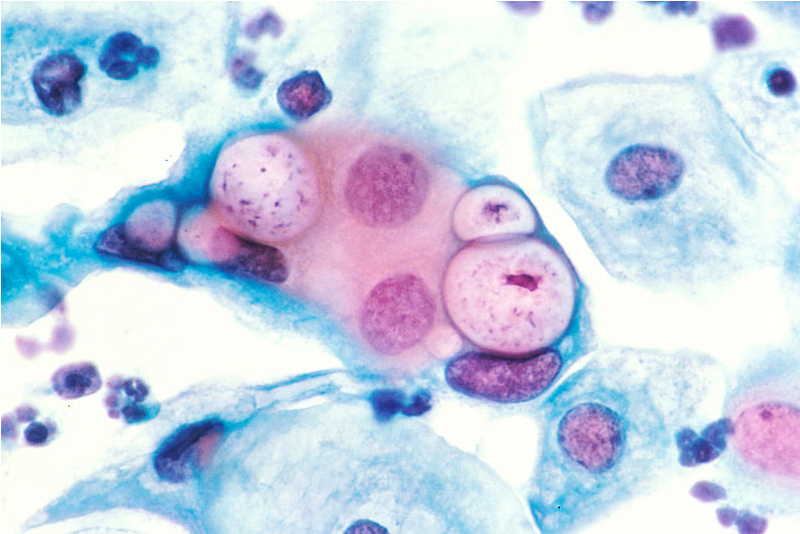Let’s Talk!
You’ve probably heard of Chlamydia, one of the most common sexually transmitted infections (STI) in the world. However, you may be unaware of important facts about this infection which may have a significant impact on your health. Therefore I will present an overview of Chlamydia from its prevalence, diagnosis, symptoms, treatment, and prevention.
The word Chlamydia has Greek roots meaning “cloakâ€. This STI is caused by the bacterium Chlamydia trachomatis, which is only found in humans, and depends on the body’s cells to supply essential nutrients.
According to Canadian laws, new Chlamydia cases need to be confidentially reported by healthcare professionals to provincial ministries of health. In turn, the Public Health Agency of Canada (PHAC) compiles these statistics for public records. Infected individuals are contacted and are required to inform recent sexual partners about their diagnosis in order for the latter to be screened for Chlamydia.
The PHAC records indicate that reported cases of Chlamydia have been on the rise since the late 1990s. For example, in 1999 there was a total of 42,141 cases of Chlamydia, and ten years later in 2009, the number has more than doubled with 87, 210 reported cases.
Chlamydia is the most diagnosed STI amongst women and men aged 20 to 24 years old, and the population most affected by this increase is socially and economically disadvantaged youth.
 Associate Professor in Computational Epidemiology Nathaniel D. Osgood Ph.D. argues that the present apparent rebound of diagnosed cases of Chlamydia worldwide is mainly due to two factors: the increased frequency of Chlamydia testing; and the more sensitive Nucleic acid amplification test (NAAT) method that only requires a urine sample.
Associate Professor in Computational Epidemiology Nathaniel D. Osgood Ph.D. argues that the present apparent rebound of diagnosed cases of Chlamydia worldwide is mainly due to two factors: the increased frequency of Chlamydia testing; and the more sensitive Nucleic acid amplification test (NAAT) method that only requires a urine sample.
Osgood explains that over time the greater number of reported cases of Chlamydia increased public awareness of this infection, which in turn led to a higher frequency of testing. Therefore he suggests that in the near future, infection rates of Chlamydia may plateau.
Chlamydia can be transmitted during vaginal, anal, or oral sex as well as during childbirth from an infected mother to the newborn. Infected babies can be born prematurely or are at increased risk of been miscarried. They can also suffer from conjunctivitis (eye infection), which may lead to blindness and pneumonia.
The typical signs and symptoms of Chlamydia infection are urethral discharge, irritation in the distal urethra, painful urination, abnormal vaginal discharge, menstrual bleeding, swollen lymph nodes, bleeding after vaginal intercourse and lower abdominal pain and conjunctivitis.
50-70% of all infected women with Chlamydia do not have symptoms. Due to its usual asymptomatic presentation, many women are not treated, which may cause long-term damage to their reproductive organs. About half of infected women not treated for Chlamydia will develop pelvic inflammatory disease (PID), infection of the uterus, fallopian tubes, and/or ovaries. This disease may cause scarring in these reproductive organs and lead to pelvic pain, infertility, and ectopic (tubal) pregnancy among other dangerous complications. Also, these women are five times more likely to contract HIV if exposed to the virus and have an increased risk of developing cervical cancer.
 Pap Smear Showing Chlamydia in the Vacuoles (Right)
Pap Smear Showing Chlamydia in the Vacuoles (Right)
On the other hand, about 50% of infected men display symptoms of urethritis (inflammation of the urethra) such as painful or painless white discharge from the penis when urinating.
According to Professor of Sexual Health at Melbourne University Christopher K. Fairley PhD., chlamydia infections naturally clear in 50% of those infected within a year, 80% within two years, and 90% in three years. However, due to the risk of permanent complications (such infertility), any signs of infection should be examined by a physician.
You can go to your family doctor’s office or local health clinic to be tested for Chlamydia. A urine sample is usually required for men, and for women, a sample of vaginal fluids collected with a vaginal swab. These samples are then sent to the laboratory and it may take a few weeks to get the laboratory results for a NAAT test.
Regular screening for Chlamydia is recommended for women who:
- are under 25
- have a history of Chlamydia or other sexually transmitted infections
- have multiple sexual partners
- do not consistently use condoms
However, there are no set guidelines for men or pregnant women.
If you are infected with Chlamydia, the standard treatment is one dose of antibiotics such as azithromycin, doxyclycline, erythromycin, or ofloxacin. If a woman is pregnant, she may be treated with erythromycin or amoxicillin. You need to abstain from sexual contact for one week until the infection is totally cleared. Also, you should tell your sexual partners in order for them to be treated as well.
The prevention of Chlamydia consists of regular use of latex condoms, limiting the number of sexual partners, and regular screening.
Although a common sexually transmitted infection, Chlamydia is not well understood by the very population that is most affected – young adults.
It is important to know the signs and symptoms of Chlamydia in order for infected individuals and their sexual partners to receive proper treatment. Due to its usual asymptomatic presentation, many people are not treated, which may cause long-term damage to their reproductive organs.
As with most diseases, prevention is the best medicine. Therefore, use latex condoms, limit your number of sexual partners, and have regular STI tests. Â Following these simple measures may protect you and your partner from this common STI.
Literary Truths
Here are other interesting facts about Chlamydia
- Reactive arthritis: Chlamydia infection can cause reactive arthritis (reiter’s syndrome), which is a combination of arthritis, conjunctivitis, and urethritis. This condition is more common in men than in women and can be permanent.
- The link between mercury and reactive arthritis: heavy metal exposure (i.e., mercury) has a negative effect on the human immune system and may lower its ability to clear Chlamydia bacteria in the joints.
- Chlamydia Rapid Test: In 2007, English physician Dr. Helen Lee led a team of researchers in the development of an innovative screening test for Chlamydia. This test is: very accurate; it requires self-collected vaginal swabs from women and urine samples from men, and patients can get the results in 30 minutes.
- Chlamydia’s cell structure: the Chlamydia bacterium shares the same genetic ancestor with modern plants, therefore it has unusual genetic and physiologic plant-like traits.
- NAAT tests: Nucleic acid amplification tests identify the genetic material (DNA) of Chlamydia bacteria. Therefore these tests are very accurate. This method was adopted in the 1990s by Canada, the United States, and other Western countries.
Truth in Motion
References
Abromaitis, Stephanie, and Richard S. Stephens. “Attachment and entry of Chlamydia have distinct requirements for host protein disulfide isomerase.” PLoS Pathogens 5.4 (2009).
Barrett, Michael, and Alexander McKay. “Rising reported rates of chlamydia among young women in Canada: what do they tell us about trends in the actual prevalence of the infection?” The Canadian Journal of Human Sexuality 17.1-2 (2008): 61.
Chiu, Basil, and Robert D. Inman. “Heavy metal exposure reverses genetic resistance to Chlamydia -induced arthritis.” Arthritis Research & Therapy 11.R19 (2009): R19.
Collier, Roger. “Sexually transmitted diseases on the rise.” CMAJ: Canadian Medical Association Journal 12 Aug. 2008: 316.
Masaro, Cindy L., et al. “STI service delivery in British Columbia, Canada; providers’ views of their services to youth.” BMC Health Services Research 12 (2012): 240.
Osgood, Nathaniel D., and David M. Vickers. “Current crisis or artifact of surveillance: insights into rebound chlamydia rates from dynamic modeling.” BMC Infectious Diseases 10 (2010): 70.
Public Health Agency of Canada – Reported Cases and Rates of Chlamydia
Great writing. My thanks for posting that. I’ll definitely return to this site to see what’s new and recommend it to my friends.
Really good post!